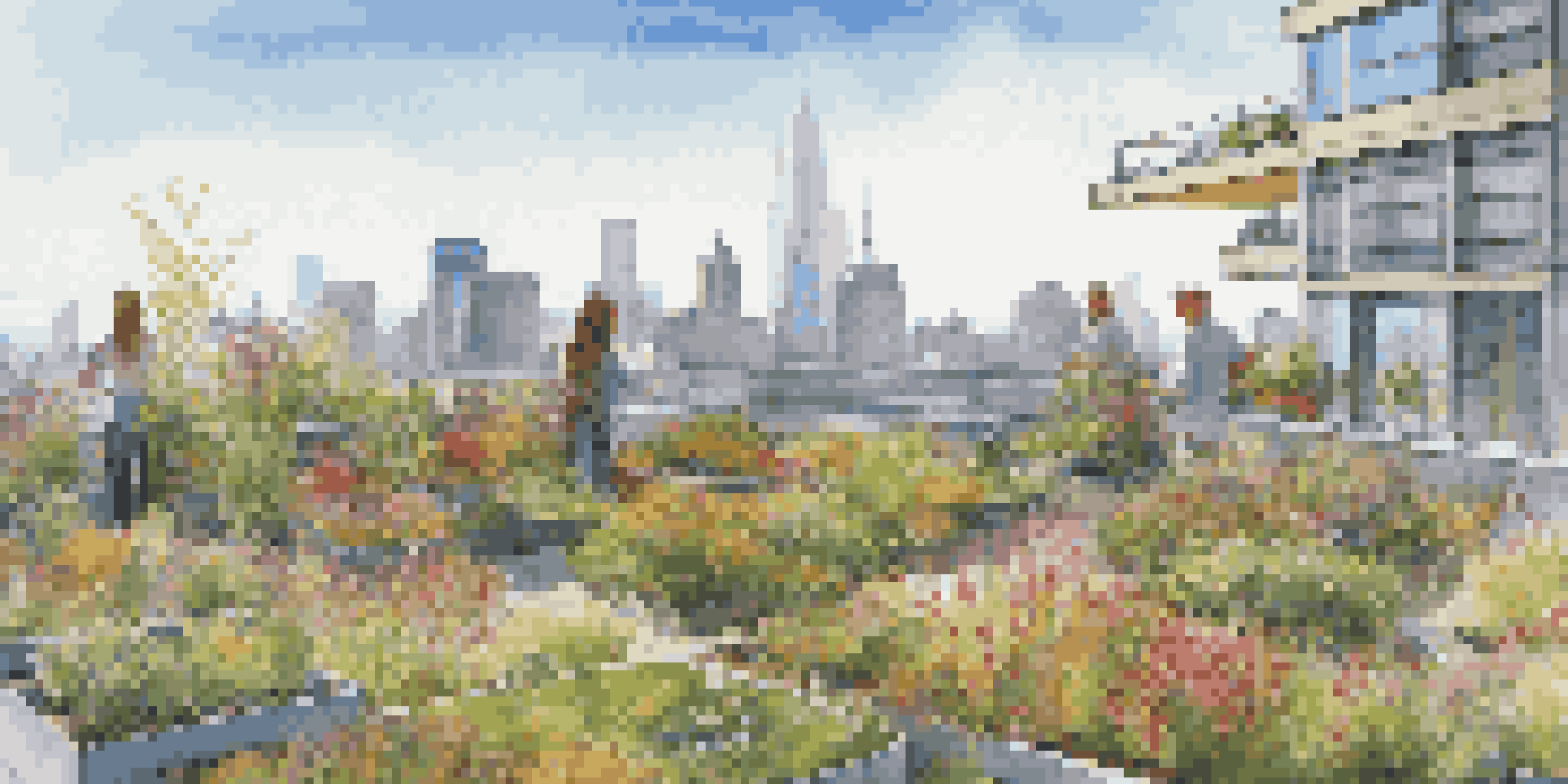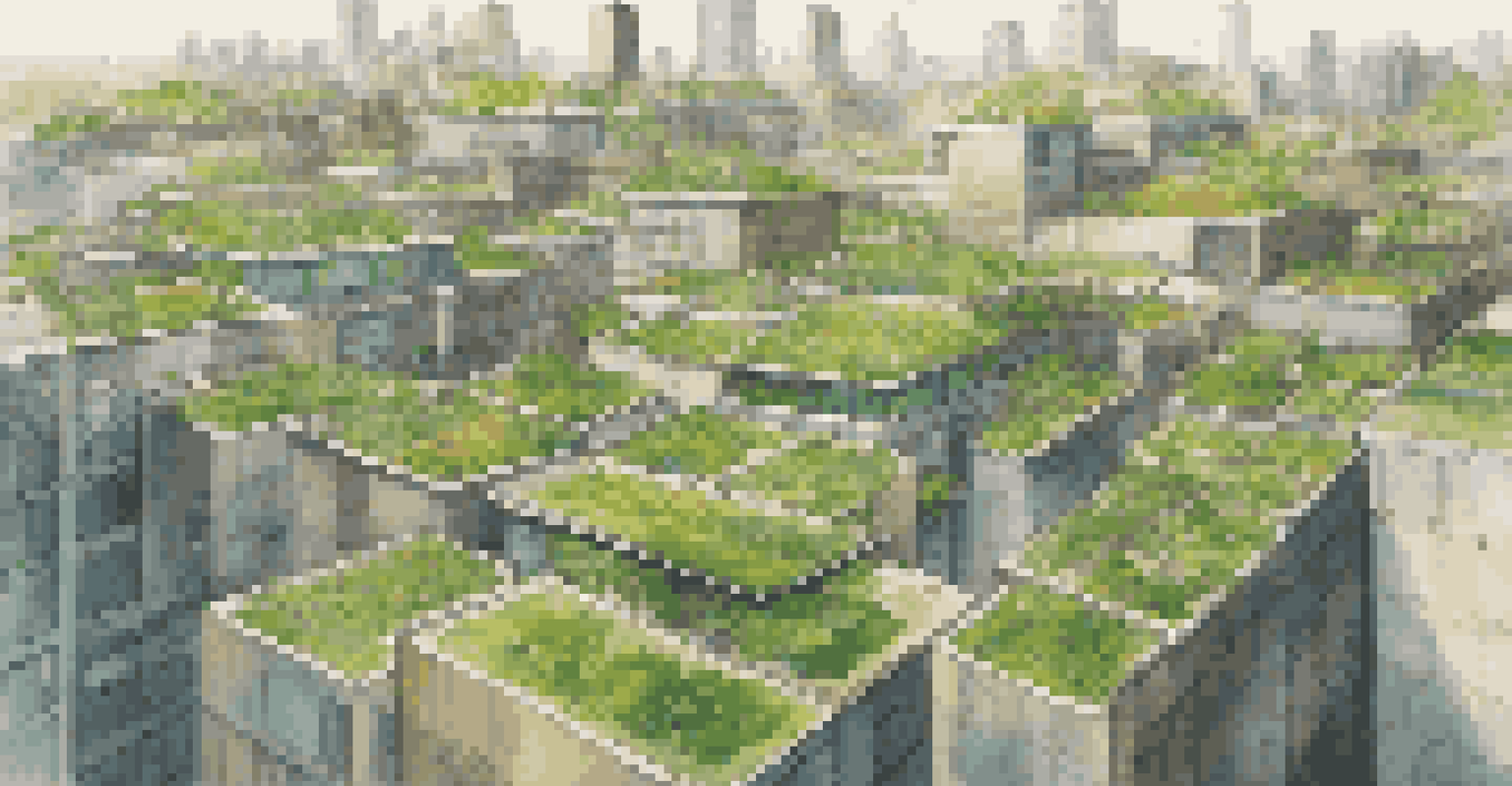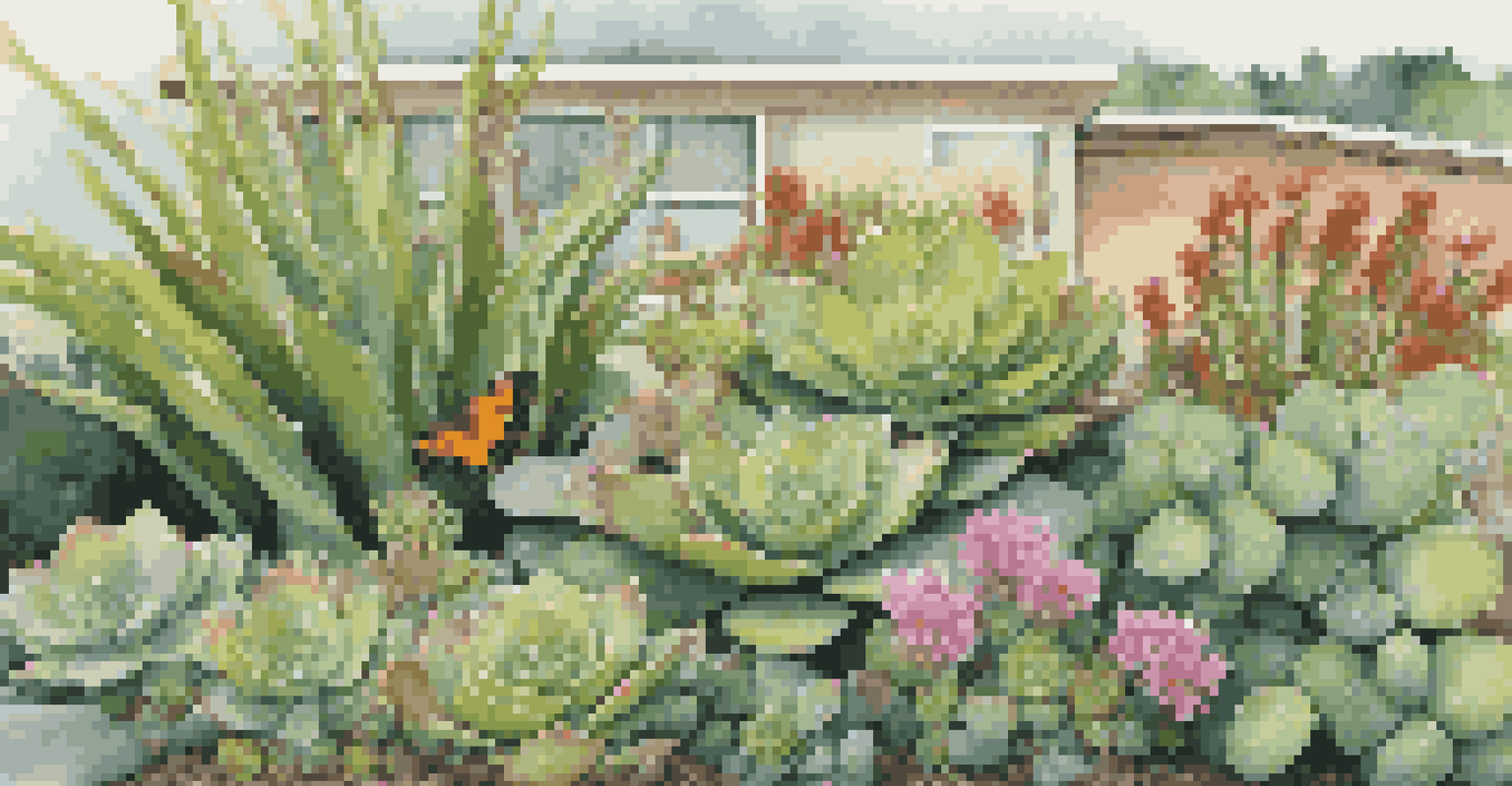Creating Inviting Spaces: The Aesthetic Value of Green Roofs

Understanding Green Roofs: A Brief Overview
Green roofs, also known as living roofs, are layers of vegetation planted on rooftops. They can vary from simple systems with a few hardy plants to complex, multi-layered gardens that support a diverse ecosystem. By integrating nature into urban settings, they provide a refreshing contrast to concrete jungles.
Green roofs are a solution that helps us manage stormwater, improve air quality, and enhance our urban environments.
Not only do green roofs add beauty to buildings, but they also offer numerous benefits, including insulation, stormwater management, and improved air quality. Their design often focuses on sustainability, making them a popular choice among eco-conscious homeowners and city planners. With a green roof, a mundane rooftop transforms into a vibrant living space.
In essence, green roofs blend functionality with aesthetics, creating inviting spaces that enhance the urban landscape. They provide a unique opportunity to connect with nature, even in densely populated areas. As cities continue to grow, the importance of such innovative designs cannot be overstated.
The Aesthetic Appeal of Green Roofs
One of the most striking features of green roofs is their ability to beautify otherwise bland rooftops. Imagine a vibrant garden blooming atop a commercial building, providing a refreshing view for pedestrians and residents alike. This visual delight not only enhances the building's facade but also contributes positively to the overall neighborhood aesthetic.

Moreover, the variety of plants used in green roofs can be tailored to suit specific designs and preferences. From colorful flowers to lush grasses, the possibilities are endless. This customization allows architects and designers to create unique spaces that reflect the character of the community and the vision of the building owners.
Green Roofs Enhance Urban Aesthetics
Green roofs beautify buildings, transforming bland rooftops into vibrant gardens that elevate neighborhood appeal.
Ultimately, green roofs serve as a testament to the beauty of nature, reminding urban dwellers of the charm and tranquility that greenery can bring. They invite people to linger, admire, and appreciate the environment, fostering a connection that is often missing in bustling urban settings.
Green Roofs and Urban Biodiversity
One significant advantage of green roofs is their role in promoting urban biodiversity. By providing habitats for various plant species, insects, and birds, these roofs contribute to the ecological balance in cities. This newfound wildlife can enhance the vibrancy of an area, making it a more inviting space for both humans and animals.
In nature, nothing exists alone.
For instance, many green roofs are designed to attract pollinators like bees and butterflies, which are vital for maintaining healthy ecosystems. By incorporating native plants, these roofs not only support local wildlife but also promote sustainable gardening practices. This interconnectedness between architecture and nature is crucial in urban planning.
In this way, green roofs become miniature ecosystems within the city, fostering a sense of community and environmental stewardship. They invite people to engage with nature in their everyday lives, reminding us that we all play a role in nurturing our planet.
The Psychological Benefits of Green Roofs
Beyond their visual appeal, green roofs also offer psychological benefits to urban dwellers. Studies show that greenery can reduce stress levels, improve mood, and enhance overall well-being. Having access to green spaces, even at a height, encourages relaxation and provides a mental escape from the hustle and bustle of city life.
For individuals living or working in high-rise buildings, a green roof can serve as a personal oasis. It provides an opportunity to step outside and connect with nature, fostering mindfulness and a sense of peace. This contrast between urban life and natural elements can rejuvenate the mind, making it essential for mental health.
Promoting Urban Biodiversity
These roofs create habitats for wildlife, supporting local ecosystems and fostering a connection between nature and urban life.
Thus, integrating green roofs into urban architecture not only beautifies the space but also nurtures the well-being of its inhabitants. By creating inviting environments that promote tranquility, these roofs become valuable assets in urban design.
Sustainability Through Green Roofs
Sustainability is at the heart of the green roof movement. These roofs help manage stormwater runoff, reduce urban heat, and improve energy efficiency. By absorbing rainwater and providing insulation, they lessen the burden on urban drainage systems and energy consumption, contributing to a more sustainable city.
In addition to environmental benefits, green roofs can aid in reducing the urban heat island effect—an issue where cities become significantly warmer than their rural surroundings. By introducing vegetation, green roofs help cool the air, making urban areas more comfortable during hot weather. This is particularly beneficial for city residents, who often lack access to green spaces.
By prioritizing sustainability, green roofs not only enhance the aesthetic value of buildings but also contribute to a healthier planet. They represent a forward-thinking approach to urban development, where beauty and functionality coexist harmoniously.
Designing Effective Green Roofs
Creating a successful green roof involves thoughtful design and planning. Factors such as plant selection, irrigation systems, and structural support all play crucial roles in the roof's longevity and effectiveness. A well-designed green roof not only looks great but also performs optimally in terms of sustainability and maintenance.
It's essential to consider the local climate and environment when selecting plants for green roofs. Native species are often the best choice, as they require less water and maintenance while supporting local wildlife. Additionally, using a mix of plant types can create a diverse and resilient ecosystem that thrives over time.
Sustainable Urban Solutions
Green roofs contribute to stormwater management and energy efficiency, promoting sustainability in urban environments.
Overall, careful design choices can lead to stunning green roofs that serve multiple purposes. By balancing aesthetics with functionality, architects and designers can create inviting spaces that enhance both individual buildings and the broader urban landscape.
The Future of Green Roofs in Urban Planning
As urbanization continues to rise, the future of green roofs looks promising. With growing awareness of climate change and the need for sustainable practices, more cities are embracing green roofs as integral components of urban planning. This shift indicates a broader recognition of the importance of integrating nature into our built environments.
Cities around the world are beginning to implement policies and incentives to encourage green roof installations. From tax breaks to zoning regulations, these initiatives aim to make green roofs accessible and appealing to builders and homeowners alike. As a result, we can expect to see a surge in green roof projects in the coming years.

Ultimately, the integration of green roofs into urban landscapes signifies a move towards more sustainable, inviting, and livable environments. They offer a glimpse into a future where nature and urban life coexist harmoniously, transforming our cities into greener, more vibrant places.